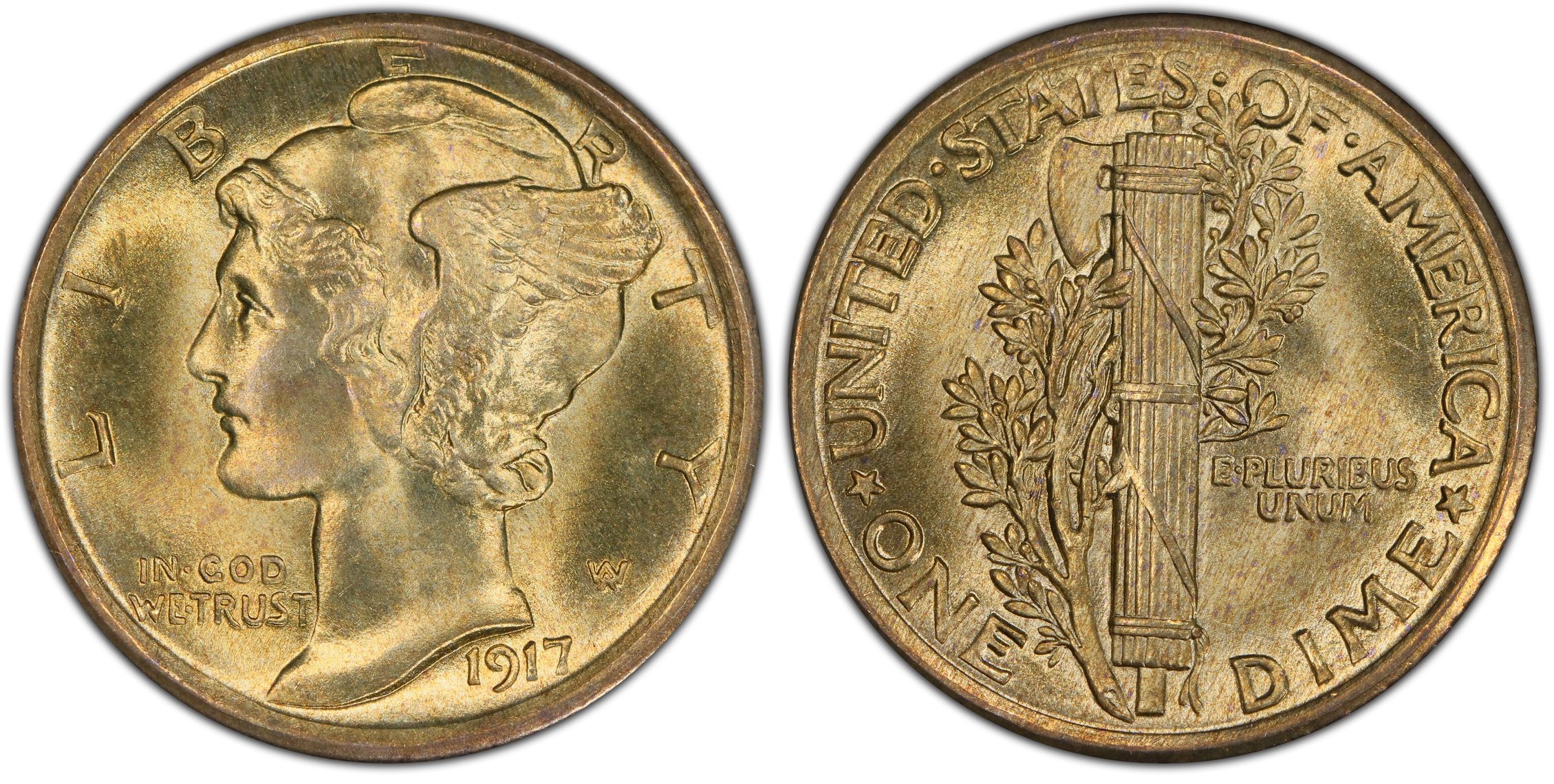- PCGS #:
- 4910
- Designer:
- Adolph Alexander Weinman
- Edge:
- Reeded
- Diameter:
- 17.90 millimeters
- Weight:
- 2.50 grams
- Mintage:
- 55,230,000
- Mint:
- Philadelphia
- Metal:
- 90% Silver, 10% Copper
- Auction Record:
- $4,140 • MS64 • 11-05-2007 • David Lawrence RC
Go To Grade
Current Auctions - PCGS Graded
Current Auctions - NGC Graded
For Sale Now at Collectors Corner - PCGS Graded
For Sale Now at Collectors Corner - NGC Graded
Rarity and Survival Estimates Learn More
| Survival Estimate | |
|---|---|
| All Grades | 10,000 |
| 60 or Better | 400 |
| 65 or Better | 30 |
| Numismatic Rarity | |
|---|---|
| All Grades | R-3.0 |
| 60 or Better | R-6.2 |
| 65 or Better | R-8.9 |
| Relative Rarity By Type All Specs in this Type | |
|---|---|
| All Grades | 40 / 80 TIE |
| 60 or Better | 27 / 80 TIE |
| 65 or Better | 7 / 80 TIE |
| Relative Rarity By Series All Specs in this Series | |
|---|---|
| All Grades | 40 / 80 TIE |
| 60 or Better | 27 / 80 TIE |
| 65 or Better | 7 / 80 TIE |
Condition Census What Is This?
David Hall:
The 1917 Philadelphia is the highest mintage of the 1916-1919 Mercury dimes and is the most common of the first dates for the series in circulated condition. However, in mint state condition, the 1916 is much more common because it was saved as the first year of issue. In Gem MS65 full band condition, the 1917 is actually somewhat rare. The 1917 usually is well struck and non-full band examples are definitely the exception. Uncirculated specimens have satiny or slightly frosty luster and toned examples are often seen.



